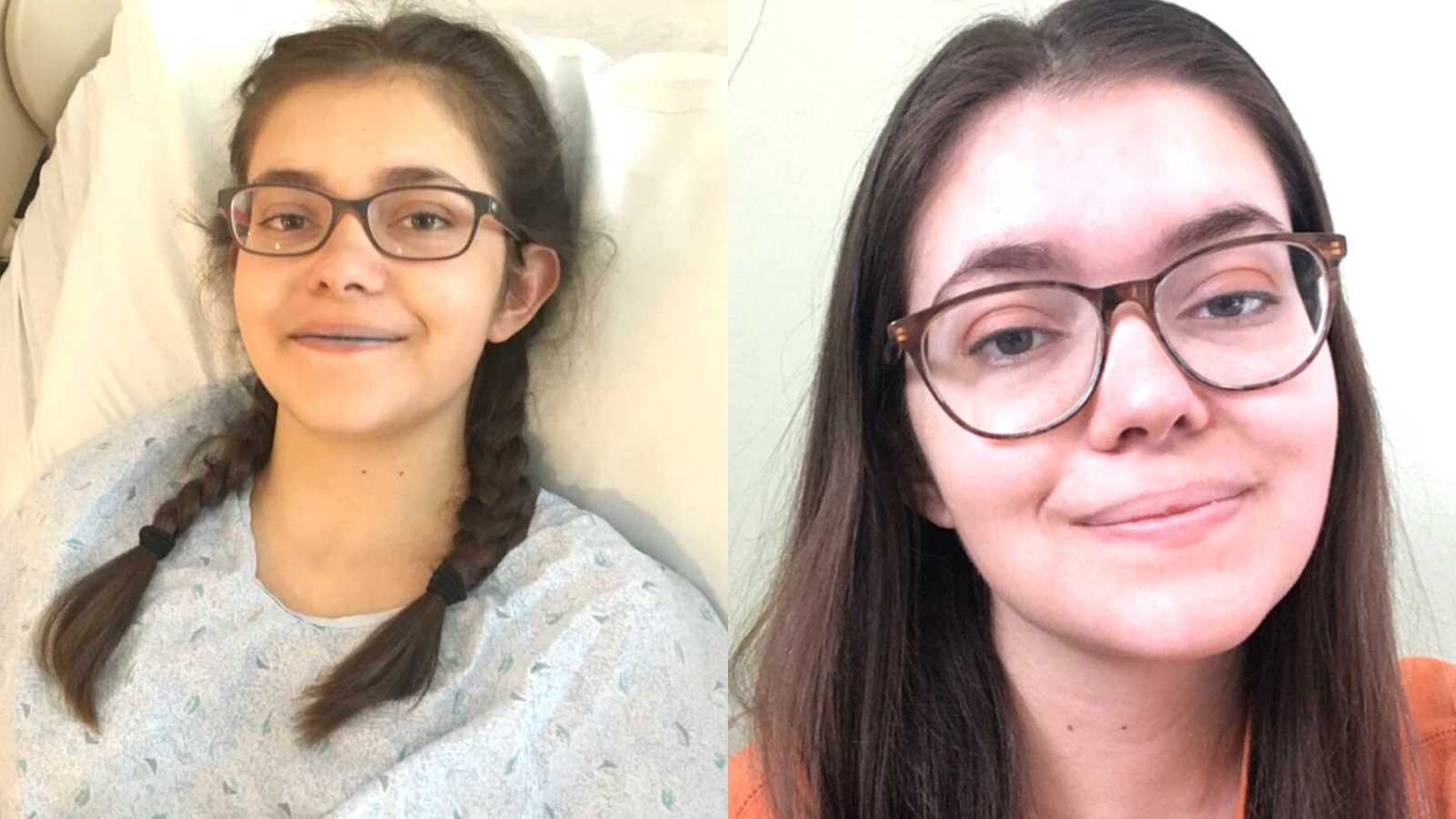“My automatic reaction is to laugh when people ask me what’s wrong with my body. Things are constantly changing but throughout my life, I’ve always had some health condition. As a baby, I was diagnosed with asthma and a condition called Periodic Fever Syndrome. It causes high fevers (my record is 106.8) and frequent infections. Like clockwork, I would be sick for 2 to 5 days every 2 or 3 weeks until I was 14 when I got my tonsils and adenoids removed. My parents did genetic testing to try and find out the subtype, but it was inconclusive. I never did any sports or many activities because I was always sick or getting over an episode. I don’t remember much before middle school, which is probably due to my health. I thought these conditions would be the worst of it, but it was mild compared to what started in 2018.
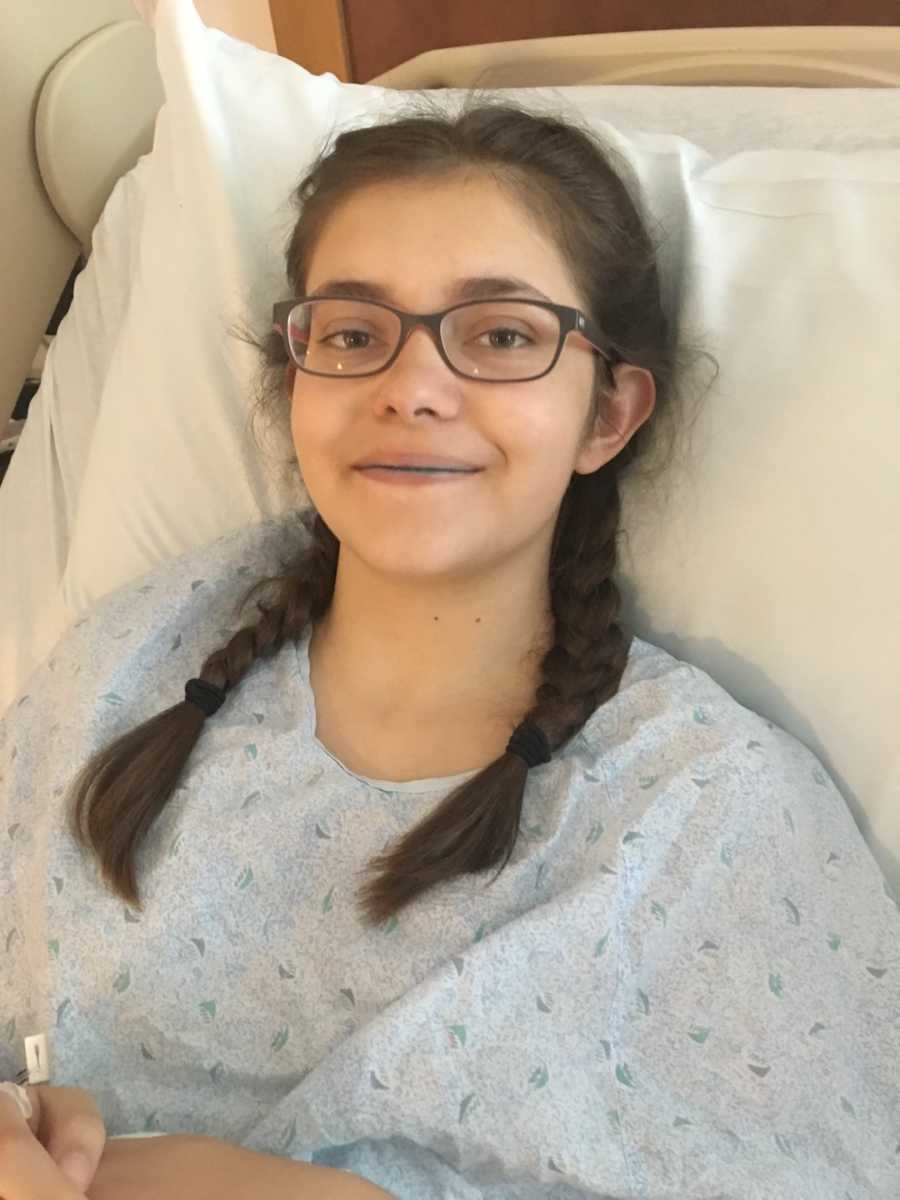
That June, I developed a handful of illnesses and injuries— Lyme disease, a severe ear infection, ovarian cysts, and a runner’s knee. I was put on strong antibiotics for the Lyme and ear infection, but they were too much for my stomach and the start of my GI issues. Even after the illnesses had run their courses, I felt achy and sick. Days turned into weeks and weeks turned into months. Over time, my achiness evolved with new types of pain appearing. All of the doctors dismissed my pain or told me it was just stress. After many visits to the ER and a variety of specialists, I was diagnosed with Amplified Musculoskeletal Pain Syndrome on October 18, 2018. AMPS is a chronic pain condition caused by a short circuit in the spinal cord. Your nerves become overactive and sensitive, leading to unnecessary pain signals being sent even after your illness or injury has disappeared. It’s rare and often misunderstood, so getting a diagnosis is difficult. One doctor even asked us what AMPS was and responded after with, ‘It’s obviously a psychological condition.’
After getting diagnosed, I became very depressed and grieved the loss of my health for months after. I was always told my periodic fever syndrome would probably go away with age, so I never expected to have a permanent sentence to pain. I was terrified of what my future would look like and felt out of control of my body. I was afraid of the condition, which led to constant flare-ups. We tried medications for over a year before I finally gave into doing a pain rehabilitation program last July, something my doctor recommended from the start. Twice a week for 6 months, I would go and do occupational and physical therapy. I worked on stabilizing my joints, strengthening my muscles, increasing endurance, and desensitizing in PT, while OT worked on pushing through the pain to complete every-day activities like school, playing games, etc. It was very difficult and even though I didn’t see a large improvement, it prevented me from declining during a difficult time.
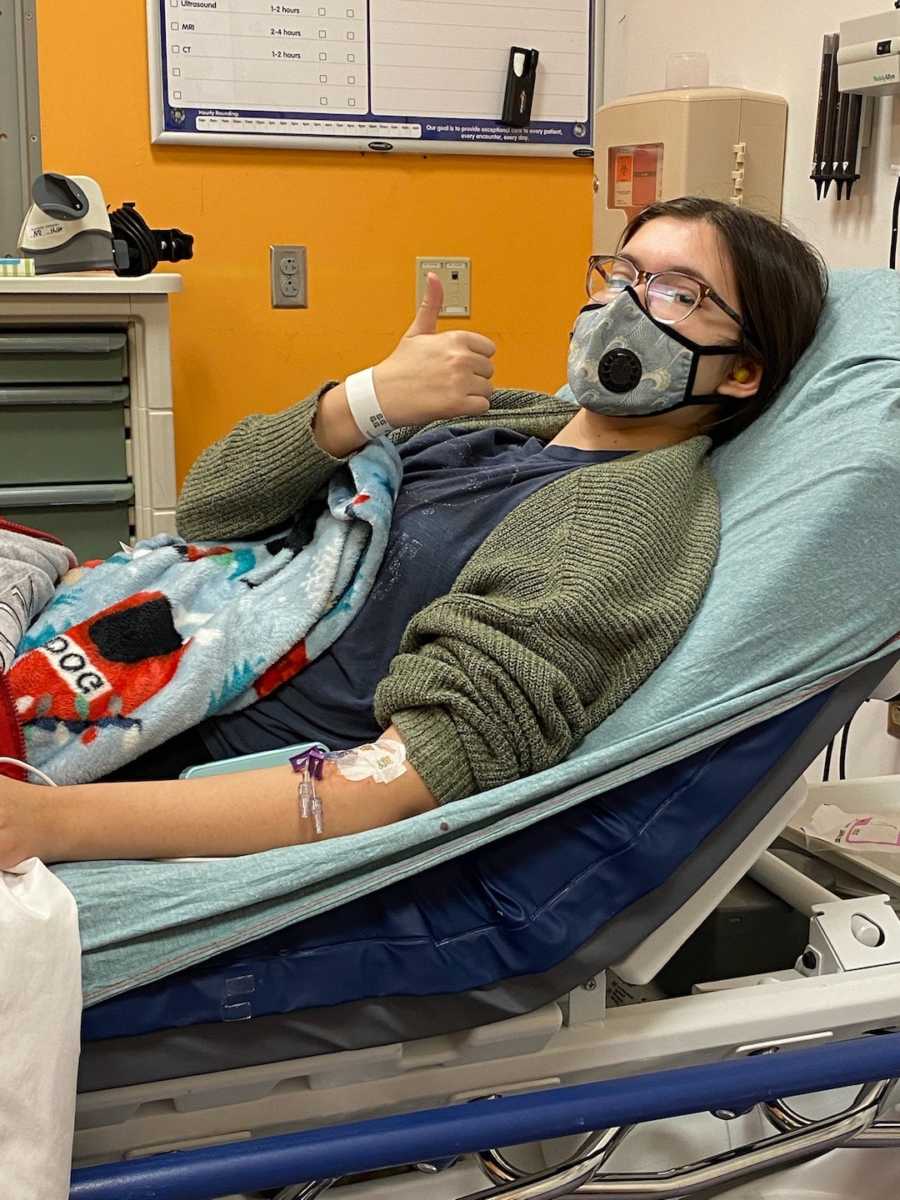
My AMPS triggered another one of my conditions, cold urticaria. Cold urticaria is a physical allergy to the cold. Exposure to things like ice cubes, frozen or refrigerated items, air conditioning, and cold weather gives me skin reactions, itchiness, a severe burning feeling, and difficulty breathing. I’ve had discomfort from the cold since the development of my AMPS, but it progressed in the winter of 2019. I was diagnosed by my pediatrician in February of 2020 after I developed a large, rectangular welt on my back after using an ice pack for 10 minutes. The condition is frustrating but I try to laugh at the irony of the condition. It’s difficult to avoid reactions as the cold’s everywhere, but I do my best to avoid the situations and carry my Epi-Pen and Benadryl everywhere.

Since developing my first knee injury, new joint issues have continued to appear. I’ve done physical therapy on and off since 2018— knee instability, shoulder instability, rib strength, and back pain are my rotation of issues. My shoulder instability has been there my whole life— I have memories in elementary school of subluxing my shoulders as a form of fidgeting. It never became a problem until high school when I dislocated it during band rehearsal. The subluxations have been worse since then and regularly stay out for days at a time.

My scoliosis was mentioned to my parents by my pediatrician years ago and never talked about again. It was rediscovered in May 2019 when I developed back pain. My curve had increased to 32 degrees with a 45-degree twist in my lower back and a hip tilt, so they recommended I go to a chiropractor. Mine had also discovered multiple ribs of mine were dislocated. The visits stabilized my curve and decreased my back pain, but my ribs were still a mess. They would dislocate on the car ride home and I’d be in horrific pain for the rest of the week. After several visits, my chiropractor told us that my joint instability wasn’t normal and asked, ‘Have you ever heard of Ehlers Danlos Syndrome?’ I had through the chronic illness community but didn’t think my symptoms were severe enough for that to be a possible diagnosis. He recommended we make an appointment with a geneticist. It took 6 months to even make the appointment that was 7 months in the future.
I finally had my appointment on July 6, 2020, and the geneticist agreed my symptoms were compatible with EDS and similar conditions. She recommended I get a connective tissue genetic panel done. We were told it would take, at most, 2 months to get approval from insurance. We fought for 6 long months to end up without coverage. They even lost my paperwork for several of those months! The hospital and insurance company refused to communicate with each other, the genetic counselor saying the testing would be tens of thousands out of pocket, and later revealed it would actually be in the hundreds. After multiple appeals were denied, it became apparent we would have to pay out of pocket if we wanted the test. The process of fighting insurance was extremely stressful for my parents and me. My mom spent hours on the phone, trying to get explanations for the denials, passing information from insurance to the hospital, and arguing with the ‘patient advocate’ who didn’t seem interested in my case.
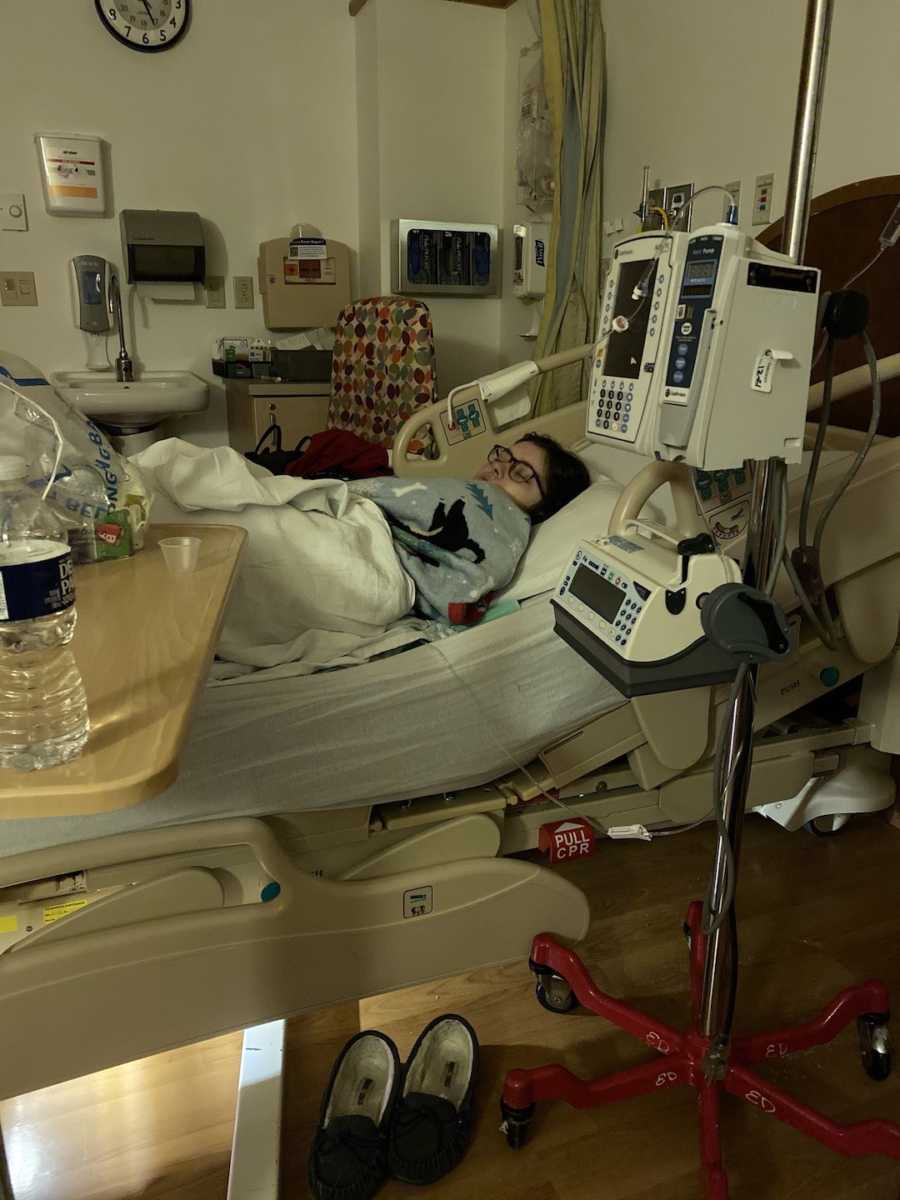
Since the course of antibiotics in 2018, my GI issues have progressed. In August of 2019, I had an especially bad bowel obstruction (TMI, I know). Since then, I’ve had a large list of food sensitivities, severe stomach pain, and frequent obstructions (sometimes multiple in a month). Fresh and most cooked fruits and veggies, high-protein and high-fat foods, and whole grains are the most painful types of foods for me. I no longer drink water and depend on vitamin water for hydration. I lost over 20% of my body weight in 8 months and felt like a zombie. I was extremely fatigued and short of breath, my muscles would shake with walking, and was constantly zoning out. Going into lockdown allowed me to really focus on my health and eventually, I managed to stop losing weight and begin gaining it. I still have extreme pain and nausea constantly, but the other symptoms now come and go.
Recently, acid reflux has been a serious issue. I vomit in my mouth at least three times a day, sometimes in the dozens. My GI stopped doing tests after my weight loss ended, so we switched doctors for them to do the exact same. They currently blame my AMPS for the pain, but my parents and I believe there’s something else underlying. It’s extremely discouraging when a doctor gives up on looking for answers. We haven’t found any medications that help, but I’m still fighting for answers I know are out there.

Yet another condition I’ve had my whole life is dysautonomia. Dysautonomia is a condition of the autonomic nervous system, the part of the body that controls bodily functions like heart rate and blood pressure. Large jumps in heart rate with standing, inconsistent blood pressure, heart palpitations, hot and cold sweats, and shakiness are all symptoms I believed were normal up until last year. They all worsened in August 2019, however, due to my decreased caloric and fluid intake. The cardiologist confirmed I have a form of dysautonomia but is unable to get coverage from insurance for tests necessary to diagnose me with a subtype.
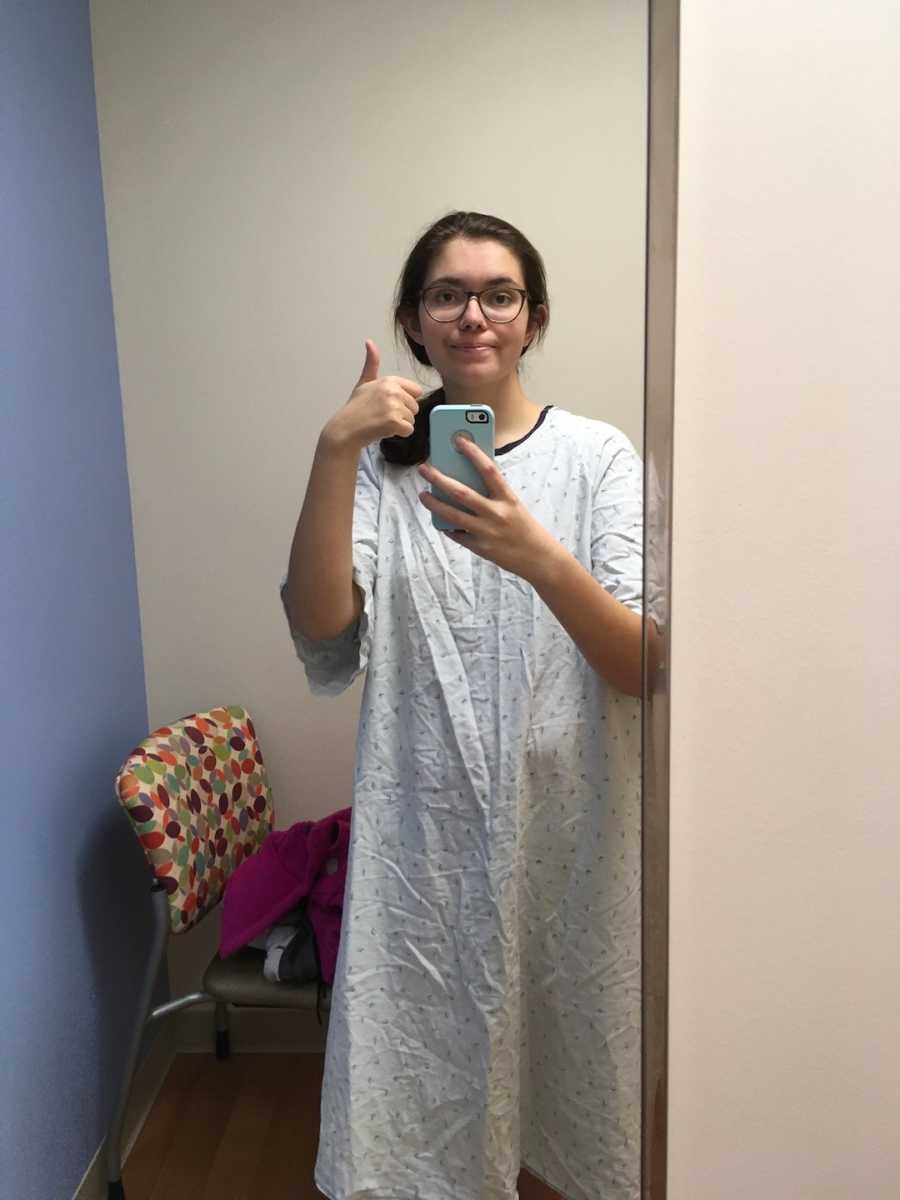
Migraines became an issue in April of 2020. I started getting sound sensitivity ones for several days every 2 weeks. Over time, every 2 weeks became every week. In mid-October, I had my weekly migraine and it never went away. It’s been over 80 days without relief. I’ve also developed eye pain, ear ringing, dizziness, worsened brain fog, and light sensitivity that seems to be getting progressively worse. I get pain spikes that leave me in 8/10 pain, unable to move or think. The migraines significantly impair my ability to function and I spend most of the day in my room to avoid noise. I received a nerve block in November and it only mildly helped for about 2 weeks.
This past December, I was admitted in the hope we would get my pain under control. They tried Tylenol and Toradol along with another medication. None of them helped, but the doctors refused to try any of the options my neurologist said I had. The ER doctor said prior they wouldn’t discharge me until my pain was a three because I’d just return a few days later. Yet, I was sent home the night of Christmas Eve worse than I was going in. It was my first admission since developing my AMPS and I’d noticed there was an obvious feeling of distrust among the doctors involving the severity of my symptoms. I deserved better care and the availability of more treatments during my admission, yet it’s normal to receive less as a chronically ill or disabled person. The standard of care needs to change and the commonality of gaslighting needs to end because there is no justification for it.
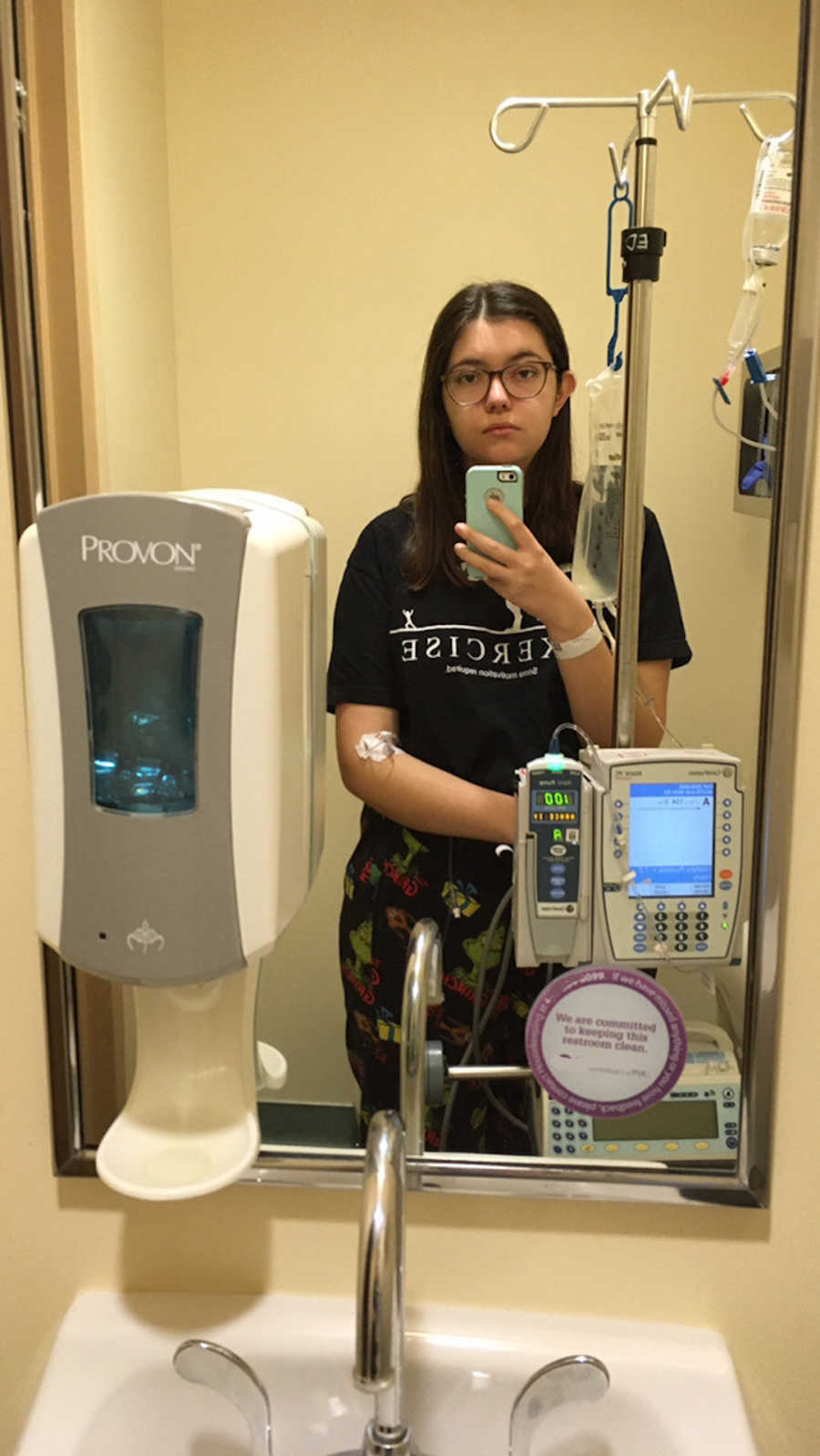
Being chronically ill can destroy you mentally. It did for me at the beginning, but I learned how to cope with it. I depended on those around me and found the online chronic illness community. The experiences you go through when chronically ill are so unique that it can be hard to find someone who relates to you or knows how to support you. My medical account has given me friendships and has ended the mental isolation I felt for so long.”

This story was submitted to Love What Matters by Annie. You can follow her journey on Instagram. Do you have a similar experience? We’d like to hear your important journey. Submit your own story here. Be sure to subscribe to our free email newsletter for our best stories, and YouTube for our best videos.
Read more stories about Lyme Warriors:
SHARE this story on Facebook or Twitter to help spread awareness about complications from Lyme disease.

